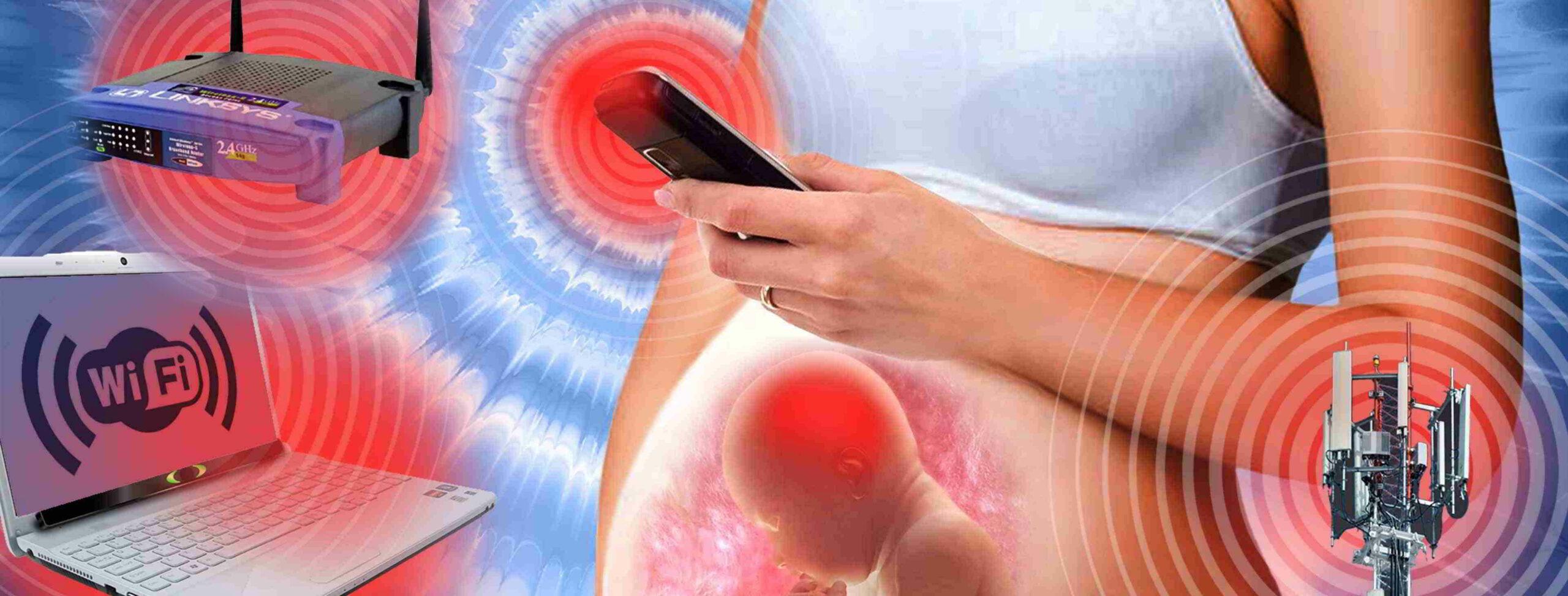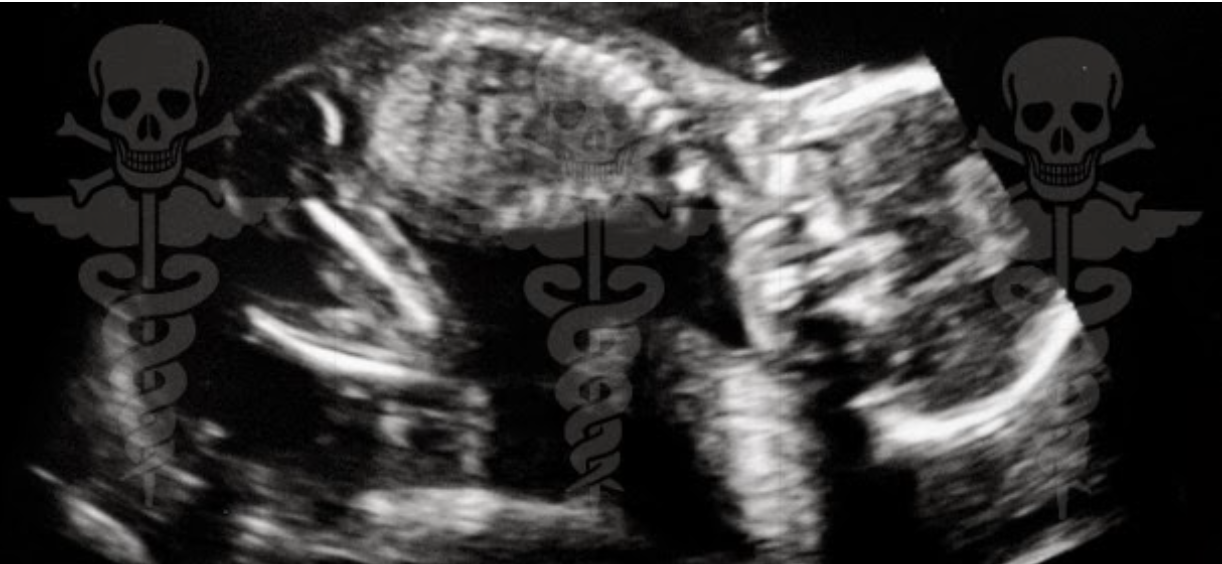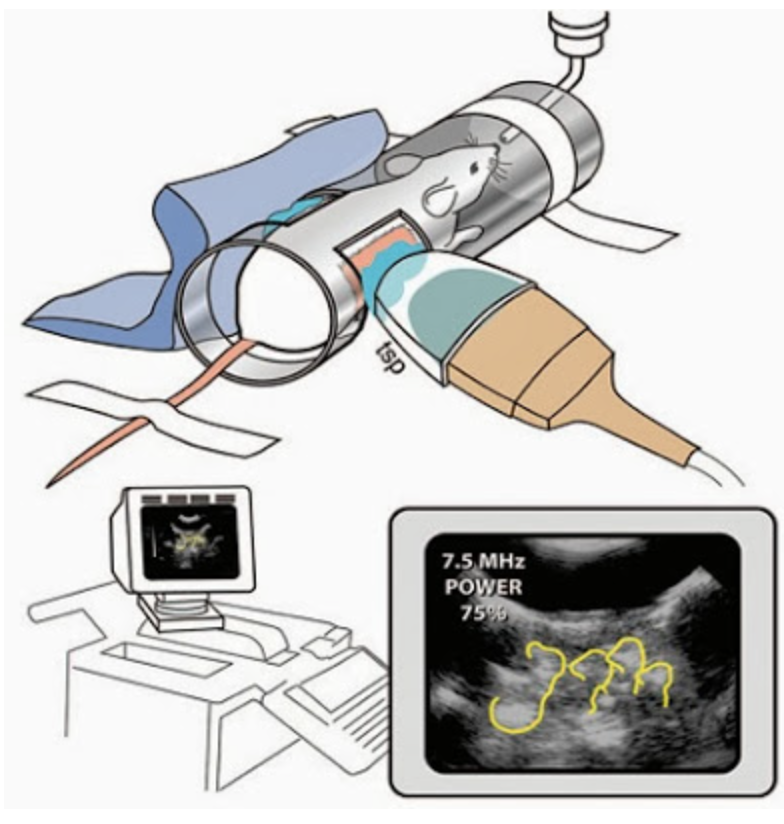I’ve dredged this article up from web.archive.org since it was promptly deleted elsewhere on the internet. Those in control of the medical establishment do not want parents to know they are deliberately trying to harm incoming babies.
Source Article Here
by Heidi Stevenson
Ultrasound has become routine during pregnancy over the last 3 decades. It is assumed to be safe, though safety was never investigated. Research is now finally being done, and the results are dismal, demonstrating clear and permanent brain damage, as shown in this study. Nearly all babies have been damaged to varying degrees, resulting in abnormal neurology becoming the norm.
That delightful ultrasound look at a fetus months before birth is a huge thrill—but that’s the only benefit. That thrill comes at a risk, one that it’s hard to imagine any parent would be willing to take if the facts were presented. Ultrasound causes brain damage and can even kill the fetus. This is not a supposition. It’s been clearly documented, and exactly what it does to the developing brain is understood.
Sonigram with Caduceus-Death’s Head, by Rob Friesel (Death’s-head caduceus added)
Dr. Jennifer Margulis points out in her brilliant new book, The Business of Baby:
Manuel Casanova M.D., a neurologist who holds an endowed chair at the University of Louisville in Kentucky, contends that Rakic’s mice research helps confirm a disturbing hypothesis that he and his colleagues have been testing for the last three years: that ultrasound exposure is an environmental factor directly contributing to the exponential rise in autism.[1]
The Study
Dr. Pasko Rakic is the lead researcher for the study documenting that ultrasound damages mouse brains.[2] It shows that the process of brain development is disturbed in mice. Though it’s easy to suggest that this is “only” a study on mice, so doesn’t prove anything about humans, that’s not true. The method of development in mouse brains is exactly the same in all mammals. Therefore, if ultrasound has an adverse effect on mouse brains, then it must also have the same effect on human brains.
The Brain’s Cellular Organization
Brain cells are not arranged in a random manner. The brain’s gray matter controls muscles, sensory perception, emotion, and memory. Gray matter cells form columns, which can function as a unit. The cells are also arranged in rows that are parallel to the surface of the brain. You can think of the brain’s cells as being arranged in a grid, like a graph. Each cell forms part of both a column and a row, though the row is actually curved to match the surface of the brain.
If developing cells do not end up where they should, behavioral problems and epilepsy can arise from the misarrangement. It’s obvious that anything capable of causing such misarrangement can produce disabilities. Therefore, Dr. Rakic’s study is particularly disturbing.
Brain Cell Migration
A fetus’s neurons are formed in the area just above the cerebellum, sometimes called the “primitive brain”, and they progress toward the outer surface of the brain. During the process, they are moved outward, parallel to the brain’s surface. The study report goes into some detail about how this process happens, but for our purposes, there’s no need to address it.
How and when this process occurs is well understood, though the means by which cells move radially, away from the column in which they start, is not well understood. What is known, though, is that the process is very sensitive and can be affected by many biological, physical, and chemical agents. The authors state:
For example, repeated exposure of the rodent and primate fetal brain to environmental agents, such as alcohol (9), drugs (22), neurotrophic viruses (23), and ionizing irradiation (24, 25), causes misplacement of neurons and behavioral deficits.
The numbers in parentheses identify study references documenting things that can result in displacement of neurons and the results.
The study provides a graphic representation of how this migration functions and malfunctions under ultrasound. The ovals represent neurons. They’re produced at the bottom, where single neurons are shown. The red ones have been labeled on day 16 of gestation. The top row (A-D) shows normal migration. The bottom row (E-H) shows abnormal migration of red (BrdU-labeled) neurons that were formed on day 16 of gestation, when ultrasound was applied.
The left-hand images (A & E) show day 16 of gestation (E16). The next ones (B & F) show day 17 of gestation (E17). The last images (D & H) show the final placement of neurons at birth (P1).
Notice that all the red neurons on the top row move upward in a consistent manner and form a single row (A-D). However, neurons that have received ultrasound often move at slower rates (F). The next batch of neurons catches up with many of them (G). The result of the the neurons receiving ultrasound, shown in red, are often displaced, with some not even reaching the cortex of the brain on the day of birth (H).
Sound Waves Equivalent to Human Fetus Exposure
[p.s. – this is animal abuse and torture]
Pregnant mice were given doses of ultrasound for times ranging from 5 to 420 minutes. As shown in the image to the right, the pregnant mice were placed in glass tubes with cutouts to deliver ultrasound to their fetuses. An acoustic gel was applied to the posterior half of the mouse and a water bag was placed on the side opposite the ultrasound device to minimize any sound wave reflection or standing waves that could affect the ultrasound application.
An ultrasound device that had been used on humans. Extensive testing was done to avoid interference and assure that the exposure of fetuses to the ultrasound was minimal. The results of these tests are provided by the authors on the publisher’s site.
The label on the graphic reading “tsp” stands for tissue standoff pad. The head of the ultrasound device was placed a distance from the mouse’s skin to assure that the fetuses received sound waves equivalent to those that a human fetus receives.
Method
146 mice were treated with ultrasound and 141 controls were run through a exactly the same process, but without actually receiving ultrasound. Another 30 mice were also included as “normal” controls, but we’ll ignore them because they don’t affect the primary results.
On the 16th day of their pregnancies, the mice were injected with BrdU, which stained only the newly produced cells. The mice were treated with ultrasound on days 17-19, the 3 days following BrdU injection. All samples were processed by technicians blinded to their control-ultrasound status.
On day 10 after birth, the young mice were killed and brain slices were taken for analysis. These were stained and processed, then viewed under microscropes, photographed, and analyzed. Grids, which the researchers called bins, were drawn on top of images to aid in the analyses.
The results of a 60 minute exposure is shown in this graphic. The control is on the left, labeled A, C, D, and E. The results of the mouse that had received ultrasound is on the right, labeled B, F, G, and H. The top two images show the locations of the slices.
Neurons stained green with BrdU, which means they were newly formed on the 16th day after conception, and the others are stained red. The six images below A and B are photos of the slices.
Images C and F show only the red stained neurons, which pre-existed the green-stained BrdU neurons.
The middle images, D and G, show the same information as C and F, but with the green BrdU-stained neurons added in. It’s easy to see that the control neurons are more clustered at the top of the cortex than those of the ultrasound-treated neurons in green.
Look at images E and H. Here, the difference between controls and ultrasound-treated neurons is even more obvious. Only the neurons that had been stained green with BrdU are shown. Notice that nearly all the control neurons made their way to level 3 or 4 of the 10 bins. Far fewer of the ultrasound-treated neurons reached levels 3 and 4. A large number reached only levels 5 and 6. Worse, though, a significant proportion hardly moved upward at all, remaining stuck at levels 1 and 2.
Finally, notice the arrow heads in H. One is in bin 7 and two are in bin 10. Bin 7 is located below the cortex. It’s in a deeper white matter area. These neurons did not even reach the cortex. Worse, though, are all these ultrasound-treated neurons still sitting in the bottom layer, a particularly worrisome situation. The study states that these neurons:
… formed a distinct band near the lateral cerebral ventricle that resemble periventricular ectopias. When these ectopic BrdU cells occurred, it was easy to distinguish the exposed brains from the control brains, even upon visual inspection of the immunostained sections.
Ectopias are abnormal positions of body parts or organs, especially at birth. These ectopias were so severe that they can be seen without a microscope—an indication of severe brain damage.
Quantitative Analysis
The example above is a single sample from the study, but there were 287 mice in it. The numbers for each of the exposure times were:
-
420 minutes: 7 controls, 7 received ultrasound
-
210 minutes: 14 controls, 14 received ultrasound
-
60 minutes: 32 controls, 29 received ultrasound
-
30 minutes: 35 controls, 35 received ultrasound
-
15 minutes: 33 controls, 39 received ultrasound
-
5 minutes: 20 controls, 22 received ultrasound

The image to the left graphs the results. USW stands for ultrasound wave and SHAM is for controls.
The graphs display the percent of neurons that remained in the bottom five bins, numbers 6-10, which means that they traveled less distance toward the brain’s surface.
Unfortunately, the 210 minute results are anomalous and the researchers offer no explanation. However, close examination shows some support for it. The percentage of 60-minute control mouse neurons that remained in bins 6-10 is less than for 30 minutes. It may be that something happens in the 30-210 minute exposure range that results in a variance.
The dispersion of neurons is similar for controls and ultrasound-exposed mice at 5 and 15 minutes, though there was a slightly higher dispersal amount in the ultrasound-exposed mice. At 30 minutes, though, the distinction starts to become significant:
-
More than 30 minutes’ exposure: 4% more neurons in bottom 5 bins (5% & 9%)
-
More than 60 minutes’ exposure: 6% more neurons in bottom 5 bins (5% & 11%)
-
More than 210 minutes’ exposure: 4% more neurons in bottom 5 bins (5% & 9%)
-
More than 420 minute’s exposure: 6% more neurons in bottom 5 bins (9% & 13%)
-
Average of all results: 3% more neurons in bottom 5 bins (5% & 8%)
Clearly, longer ultrasound exposure results in more neurons getting left behind.
As the authors wrote:
At durations of 420 min, it is possible that the stress of this long exposure leads to increased cell dispersion above the normal control condition. However, it is difficult to completely assess durations of 420 min and above because some pups from USW-exposed mothers were either resorbed or cannibalized at birth (Table 1). In fact, no pups survived to P10 [10 days after birth] in pregnant mice exposed to 600 min of USW, although the sham control mouse gave birth to a full litter that survived until P10.
Put simply, they were saying that when mouse pups were exposed to 420 minutes of ultrasound, some of them did not survive. They were either absorbed before birth or born dead or nonviable, and therefore cannibalized by their mothers. They also subjected some mouse fetuses to 600 minutes of ultrasound. None of the fetuses survived that much ultrasound exposure. All died by the 10th day after birth. However, none of the fetuses of the control group died.




